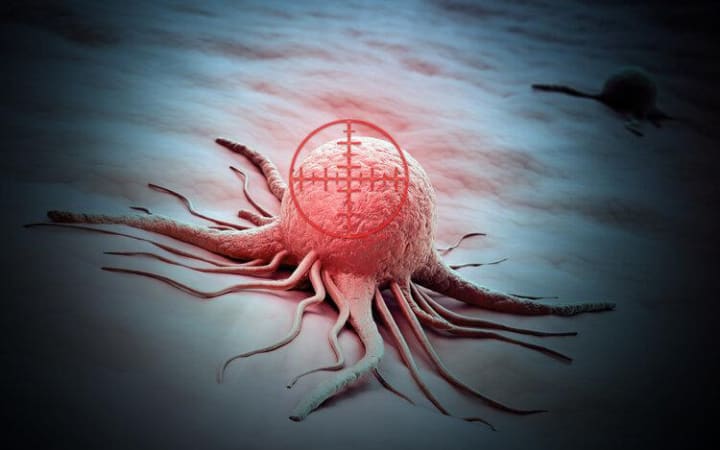Don't pay attention to these small body problems, they may be cancer
Several common precancerous lesions

"Cancer doesn't come in a day, so why do so many people suddenly get it?"
This morning, Xiaolin threw in this question.
I told her that cancer is not like other diseases, it develops quickly in a few months or slowly in a decade or two, but before that, there will be "precancerous lesions".
"Why are precancerous lesions not detected?"
Because the symptoms are not obvious, and many people do not know which diseases are precancerous.
Then what are precancerous lesions? If you want to know the answer, please read on.

From cancer cells to in situ cancer, it takes several years to decades
From the emergence of cancer cells to the formation of cancer tumors, it is not a one-time process. It often takes a long process for normal cells in the human body to mutate into cancer cells. It usually starts with mild atypical hyperplasia, then gradually progresses to moderate and severe atypical hyperplasia, and finally develops into carcinoma in situ, which takes several years or even decades.
However, different cancers do not take the same amount of time to develop from cancer cells to carcinoma in situ, for example, it takes 6 to 10 years to develop from grade I in situ adenocarcinoma of the cervix to grade III carcinoma in situ; it takes 14 to 18 years to develop from heterogeneous hyperplasia of the breast to carcinoma in situ; it takes 5 to 20 years for colon adenoma to form and then another 5 to 15 years to develop to colon cancer; prostate cancer has the process of 30 years or more; lung cancer in smokers generally has a latent period of 20 to 40 years before it occurs; esophageal cancer also generally takes about 20 years to develop.
Cancer cells are very small and can only be distinguished with the naked eye when they accumulate to about 100,000. When the cancer cells reach 1 billion, the tumor volume is only the size of a grape and can only be detected by ultrasound or CT. If the tumor reaches the size of a golf ball, it usually means that it has been experienced for more than 3 years.
The authoritative journal Nature published a study from John-Hopkin University in 2010, which found that it takes at least ten years for pancreatic cancer to progress from cell mutation to the formation of non-metastatic cancer cells, and then at least another five years until the cancer cells get the ability to metastasize, and finally, the patient dies within an average of two years.
II. Several common precancerous lesions
-Atypical hyperplasia of the breast
This may be a precancerous signal from breast cancer. Usually, simple breast enlargement is not cancerous, but atypical hyperplasia of breast tissue, high hyperplasia of ductal epithelium, and cystic hyperplasia of the breast are considered as possible precancerous lesions. If a woman finds a lump in her breast, she must seek medical attention to identify the cause.
-Chronic atrophic gastritis
It may be a precancerous lesion of gastric cancer. Most patients with chronic gastritis will have better results after receiving regular treatment and will not cause cancer. However, some gastric cancers may coexist with some benign lesions, such as cancerous lesions based on chronic atrophic gastritis, and gastric cancer is easily confused with other gastric diseases, leading to misdiagnosis or omission.
-Painless lymph node enlargement
Swollen lymph nodes are usually the first symptoms of lymphoma, especially in the armpit, neck, or groin. If you find swollen lymph nodes on your body without pain and with a hard texture, you should be alerted to lymphoma and seek medical attention.
-Adenomatous intestinal polyp
Adenomatous polyps are lesions in the lumen of the large intestine where the mucosal surface is elevated, leading to local hyperplasia. Among them, adenomatous intestinal polyps and hyperplastic intestinal polyps are closely related to intestinal cancer and need to be removed promptly.
-Pulmonary nodules
Most lung nodules are benign and are rarely precancerous or lung cancerous. In most cases, lung nodules are only inflammatory lesions. If lung nodules are found in high-risk groups who are over 40 years old or have a family history of the disease, it is better to go to the hospital for examination in time.
Attention: Don't be careless when these minor ailments appear in the body, they may be cancer
1. Irregular stomach pain may be stomach cancer
Don't always think that stomach pain is a stomach ulcer, but it may also be stomach cancer.
Zhao Yuzhou, deputy director of general surgery at Henan Cancer Hospital, mentioned that both gastric ulcer and gastric cancer can cause stomach pain symptoms, but there is a big difference between them.
Gastric ulcer mostly occurs in young and strong people, and the condition is easy to be repeated, while gastric cancer is common in middle-aged and old people, and it will show slowly worsening epigastric pain, with fast development and short course; the pain caused by gastric ulcer is usually more obvious after a meal, and the pain can last for several hours with burning sensation, and then will disappear gradually; the pain of gastric cancer is not regular, and it has nothing to do with eating.
2. Mixed blood and stool with dark red color, be careful of intestinal cancer
Blood in the stool may not necessarily be hemorrhoids, but also rectal cancer.
Both hemorrhoids and rectal cancer have blood in stool, but most patients first consider hemorrhoids and ignore the possibility of rectal cancer, there are differences between hemorrhoids and rectal cancer in terms of blood in the stool.
There are differences between hemorrhoids and rectal cancer: blood in the stool is usually on the surface of the stool, not mixed with feces, bright red, and has no mucus. In rectal cancer, blood in the stool is mixed with blood, dark red or jam-colored, with mucus in the stool, and accompanied by changes in stool habits.
3. Persistent and severe bone pain is not necessarily growing pains, but maybe myeloma
Don't think of it as growing pains, but be careful of myeloma.
One of the symptoms of multiple myeloma is bone pain, but there is a difference between it and growing pains. Growing pains usually occur in children and adolescents; they do not exist in adults, and they are usually symmetrical. Bone pain caused by myeloma, on the other hand, is persistent and intense, and may even result in fractures.
4. Mouth ulcers that persist for two weeks without healing should be beware of oral cancer
Ordinary mouth ulcers with regular shape and obvious pain can be felt during the attack, and usually can be cured after 1 to 2 weeks through treatment or a light diet. However, oral cancer is a malignant tumor with unclear boundary, irregular shapes, and less obvious pain, but it is difficult to be cured after a long time.
5. Irritating dry cough with blood in sputum is alert to lung cancer
A common cough caused by a cold is usually an upper respiratory tract infection, which is accompanied by nasal congestion, fever, sneezing, and other symptoms in addition to cough. However, if you find an irritating dry cough with blood in the sputum or coughing up blood, you should be alert for lung cancer.
Cancer is not formed overnight, which also tells us that cancer can be detected in time, and if you find any abnormalities in your body, you must go to the hospital for an examination in time.






Comments
There are no comments for this story
Be the first to respond and start the conversation.